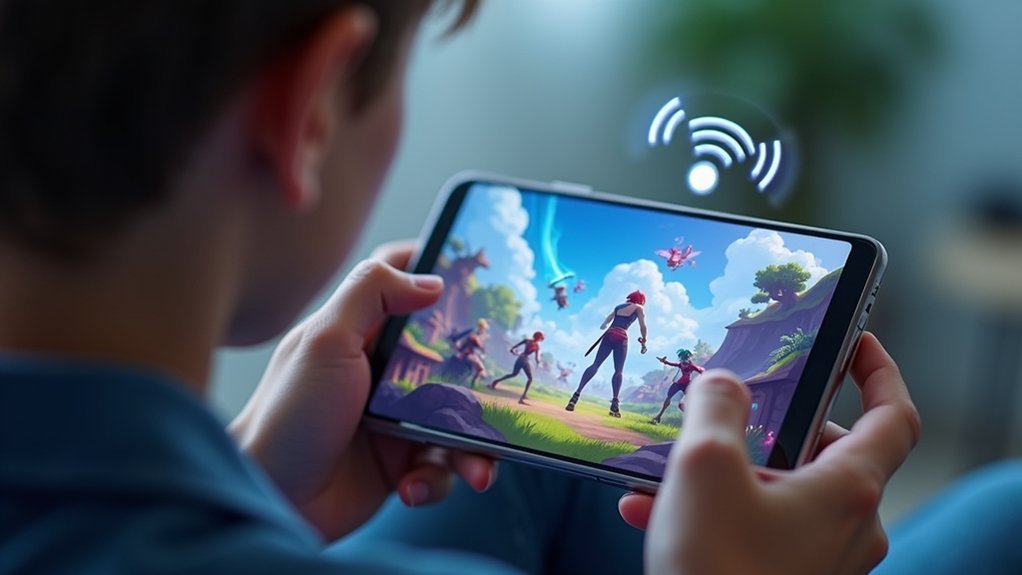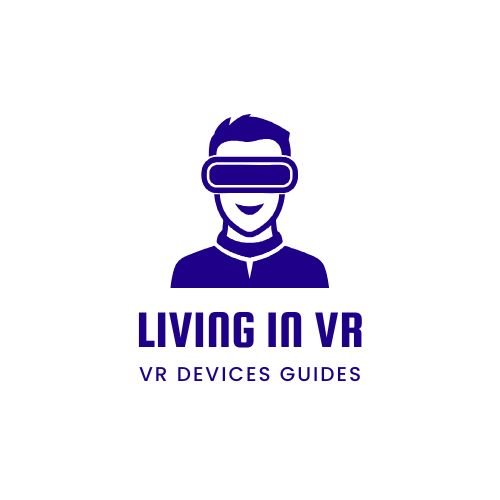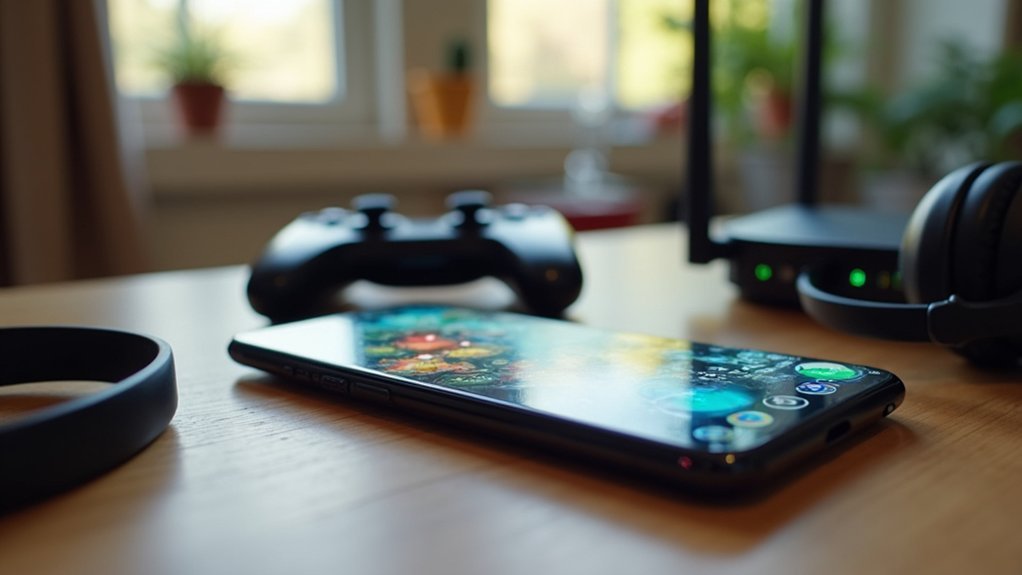Your mobile multiplayer games run smoothly when you’ve got optimized network infrastructure with low-latency connections, cloud-based servers that handle real-time data transmission, and advanced synchronization techniques like client-side prediction and state synchronization. You’ll also need robust backend services, thorough performance testing across various devices, and lag compensation methods to minimize network delays. Quality server architecture with load balancing and anti-cheat systems guarantees fair, responsive gameplay that keeps you fully immersed without disruption.
Essential Network Infrastructure for Mobile VR Multiplayer Games

When you’re developing mobile VR multiplayer games, you’ll need a rock-solid network infrastructure that can handle the demanding real-time requirements these experiences demand.
Your robust server infrastructure should utilize cloud-based solutions to manage real-time data transmission and synchronization effectively.
Cloud-based server infrastructure forms the backbone of effective real-time data transmission and synchronization in mobile VR multiplayer environments.
You can’t compromise on low-latency network connections since even minor delays will disrupt immersion and cause motion sickness.
Consider implementing peer-to-peer networking models to reduce server costs and improve connection speeds, though you’ll need efficient matchmaking systems.
Invest in reliable backend services including real-time databases for effective player data management.
Focus on bandwidth optimization through state synchronization and data compression techniques to maintain smooth gameplay across varying mobile network conditions.
These elements work together to create seamless player interactions.
Optimizing Server Architecture and Backend Systems
You’ll need robust server hosting solutions that can handle fluctuating player loads while maintaining consistent performance across your mobile VR multiplayer game.
Your choice between dedicated servers, cloud-based infrastructure, or hybrid approaches directly impacts how well your game scales during peak usage periods.
Integrating the right backend services guarantees seamless data flow between players while supporting features like matchmaking, player progression, and real-time game state synchronization.
Server Hosting Solutions
Since mobile multiplayer games face unpredictable player loads that can surge from hundreds to thousands of concurrent users within minutes, selecting the right server hosting solutions becomes critical for maintaining consistent performance.
Cloud providers like AWS Gaming and Google Cloud offer scalable architecture that automatically adjusts resources based on demand fluctuations.
Effective server hosting solutions provide:
- Flexible Resource Scaling – Dynamic allocation matching player traffic patterns
- Low Latency Infrastructure – Geographically distributed servers minimizing response times
- Real-Time Database Integration – Seamless connection to Firebase or MongoDB for instant data updates
- Robust Backend Services – Extensive matchmaking and player management systems
Your client-server model benefits considerably from cloud-based hosting, as centralized data management reduces cheating while ensuring stable player interactions.
This foundation enables smooth gameplay experiences regardless of concurrent user volumes.
Backend Service Integration
Building on this hosting foundation, your backend service integration determines how efficiently these servers communicate with your game clients and manage player data.
You’ll need real-time database solutions like Firebase or MongoDB for instant game state retrieval and seamless multiplayer experiences. Dedicated backend services handle matchmaking and player statistics, creating fair competitive environments that keep players engaged.
Implementing microservices architecture lets you optimize specific functions independently without disrupting your entire system. Your cloud-based game servers benefit from this modular approach, enabling easier updates and performance improvements.
Essential security measures including encryption and authentication protocols protect sensitive player information and maintain trust. This thorough integration guarantees your multiplayer games deliver consistent, responsive performance while scaling effectively with player demand.
Performance Testing and Quality Assurance Strategies

When developing mobile multiplayer games, implementing thorough performance testing and quality assurance strategies becomes critical for delivering smooth, engaging experiences across diverse hardware configurations.
You’ll need extensive approaches to guarantee your multiplayer modes perform at their best under real-world conditions.
Essential performance testing and quality assurance strategies include:
Comprehensive testing strategies ensure multiplayer games deliver consistent performance and quality across all devices and network conditions.
- Device Farm Testing – Test across various devices to identify crashes and FPS drops that could compromise user experience.
- Analytics Tools Integration – Utilize platforms like Crashlytics to monitor performance metrics and discover issues early.
- Lag Compensation Implementation – Deploy techniques that predict player actions and minimize network latency effects for responsive gameplay.
- Load Testing Protocols – Regularly evaluate server infrastructure performance under peak traffic to maintain stability during high-demand periods.
User Interface Design for Seamless VR Multiplayer Experiences
You’ll need to prioritize intuitive VR interface design that allows players to navigate complex multiplayer environments without confusion or hesitation.
Your HUD elements must remain uncluttered, giving players clear access to essential information while preventing visual overload that can break immersion.
When you strip away unnecessary interface components, you’re creating space for players to focus on meaningful interactions with other users in the virtual environment.
Intuitive VR Interface Design
Three core principles define exceptional VR interface design for multiplayer games: spatial awareness, visual clarity, and intuitive interaction patterns. Your VR interface design should prioritize these elements to create engaging multiplayer experiences that feel natural and responsive.
Effective intuitive design requires:
- Minimizing visual clutter in players’ field of view to maintain focus during intense multiplayer sessions.
- Implementing haptic feedback and auditory cues that provide immediate action responses.
- Using consistent design patterns with recognizable icons to reduce learning curves.
- Conducting extensive user testing with diverse demographics to guarantee accessibility.
Your spatial awareness implementation allows players to interact naturally within 3D environments, while haptic feedback creates tactile connections between actions and outcomes.
Through thorough user testing, you’ll refine interface elements that transform complex VR controls into an engaging experience for all players.
Uncluttered HUD Elements
Since your VR multiplayer experience depends heavily on what players see in their field of view, designing uncluttered HUD elements becomes critical for maintaining immersion and performance.
You’ll want to display only essential information that supports gameplay and social elements without overwhelming players. Effective UI design, like that seen in mobile multiplayer games such as Brawl Stars, emphasizes clarity and intuitive navigation.
Your uncluttered HUD should facilitate smooth communication between teammates while enabling split-second decision-making.
When you prioritize usability testing, you make certain players of all experience levels can easily access critical functions.
This thoughtful user interface approach directly impacts player engagement, creating seamless interactions that keep participants focused on the action rather than struggling with confusing visual elements cluttering their view.
Real-Time Data Synchronization and Lag Compensation

When players tap their screens to fire a weapon or execute a special move in a mobile multiplayer game, they expect immediate response regardless of their internet connection quality.
Real-time data synchronization guarantees all players experience identical game states, while lag compensation techniques mask latency effects for smoother interactions.
Seamless multiplayer gaming relies on real-time synchronization ensuring every player sees identical game states while compensating for network delays.
Developers optimize mobile multiplayer games through these essential methods:
- Client-side prediction – Your device anticipates actions before server confirmation
- State synchronization – Only game changes transmit, reducing bandwidth usage dramatically
- Advanced interpolation – Predicts player movements to maintain fluid animations
- Server reconciliation – Corrects discrepancies between predicted and actual results
Peer-to-peer networking presents unique challenges since devices communicate directly, potentially creating inconsistencies due to varying internet speeds.
These sophisticated techniques work together to deliver an exceptional gaming experience despite network fluctuations.
Cross-Platform Compatibility and Device Optimization
While seamless gameplay depends on robust networking, your game’s success ultimately hinges on delivering consistent performance across the diverse ecosystem of mobile devices.
Cross-platform compatibility breaks down barriers between iOS and Android users, expanding your gaming community and creating a unified player base. To optimize performance across varying hardware capabilities, you’ll need to implement dynamic graphics scaling that adjusts resolution, frame rates, and visual effects based on each device’s specifications.
Device optimization requires thorough testing on both flagship and budget smartphones to guarantee your mobile multiplayer game runs smoothly on minimum specifications.
Consider integrating adaptive bitrate streaming to maintain gameplay quality during network fluctuations, and explore cloud gaming solutions that offload processing power to remote servers, assuring consistent performance without compromising visual fidelity across all mobile devices.
Anti-Cheat Systems and Security Measures for Fair Play
Although cross-platform optimization guarantees your game runs smoothly across devices, protecting the integrity of competitive gameplay requires sophisticated anti-cheat systems that actively monitor and prevent malicious behavior.
These systems analyze player behavior patterns to detect irregularities like aimbots and wallhacks, maintaining a fair gaming environment through continuous surveillance.
Advanced monitoring systems continuously track player actions to identify suspicious patterns and maintain competitive fairness across all gaming sessions.
Essential security components include:
- Encryption techniques that protect sensitive player data and prevent unauthorized access during game sessions
- Server-side validation that verifies player actions against expected game physics and rules
- Regular updates to anti-cheat algorithms that adapt to evolving cheating strategies
- Community reporting features that empower players to flag suspicious activities
You’ll find these multi-layered approaches work together, creating robust defenses that preserve competitive integrity while ensuring legitimate players enjoy balanced, secure gameplay experiences.
Frequently Asked Questions
How to Make Games Run Smoothly on Phone?
You’ll optimize performance by closing background apps, lowering graphics settings, clearing cache regularly, updating your device, using game mode features, ensuring stable internet connection, and keeping your phone cool during extended gaming sessions.
Why Are Mobile Games so Slow?
You’re experiencing slowness because your device lacks processing power, you’re using limited cellular bandwidth, you’re connecting to distant servers, or you’re playing during peak hours when networks get congested.
How to Boost Phone Performance for Gaming?
You’ll boost phone performance by closing background apps, clearing app caches regularly, lowering graphics settings, updating your software, and activating gaming mode to prioritize resources and minimize distractions.
What Makes a Good Mobile Phone Games?
You’ll want intuitive controls, smooth performance across devices, engaging social features like leaderboards, balanced monetization that doesn’t disrupt gameplay, and reliable networking for seamless multiplayer experiences that keep you coming back.





Leave a Reply